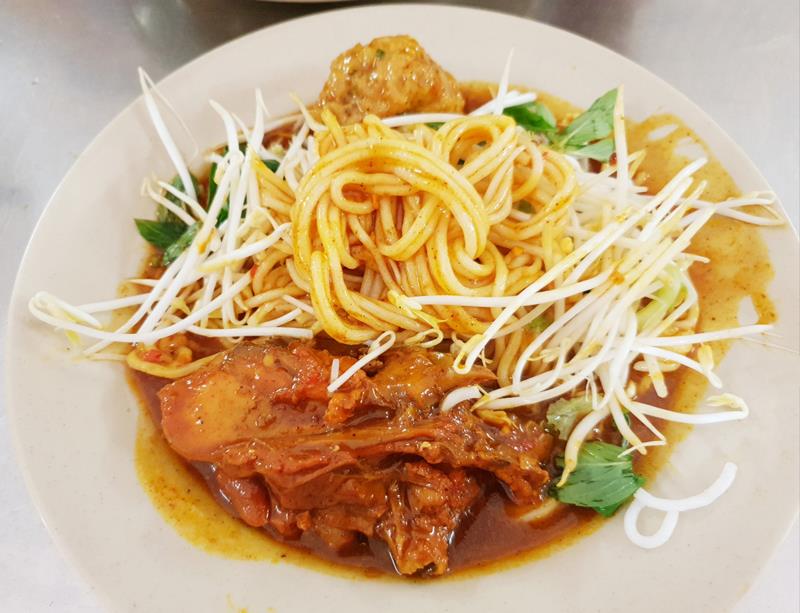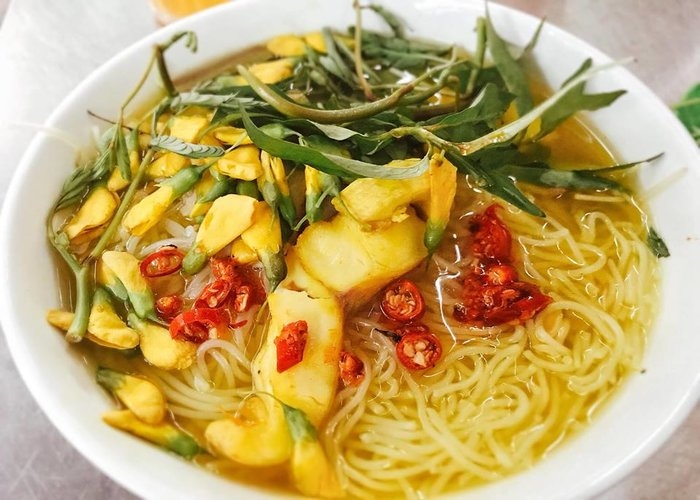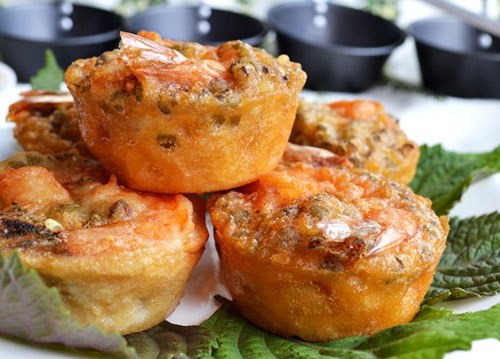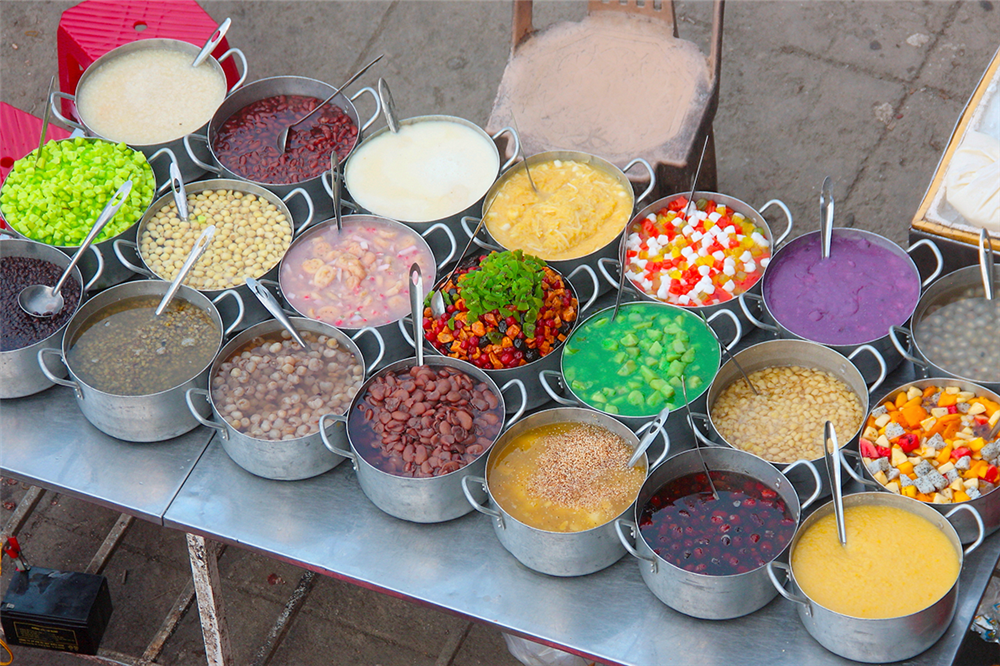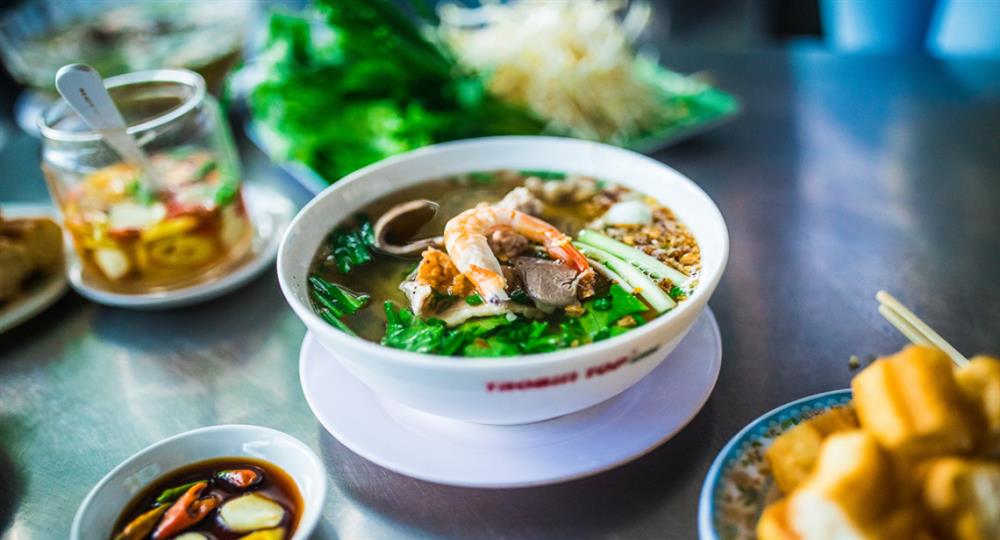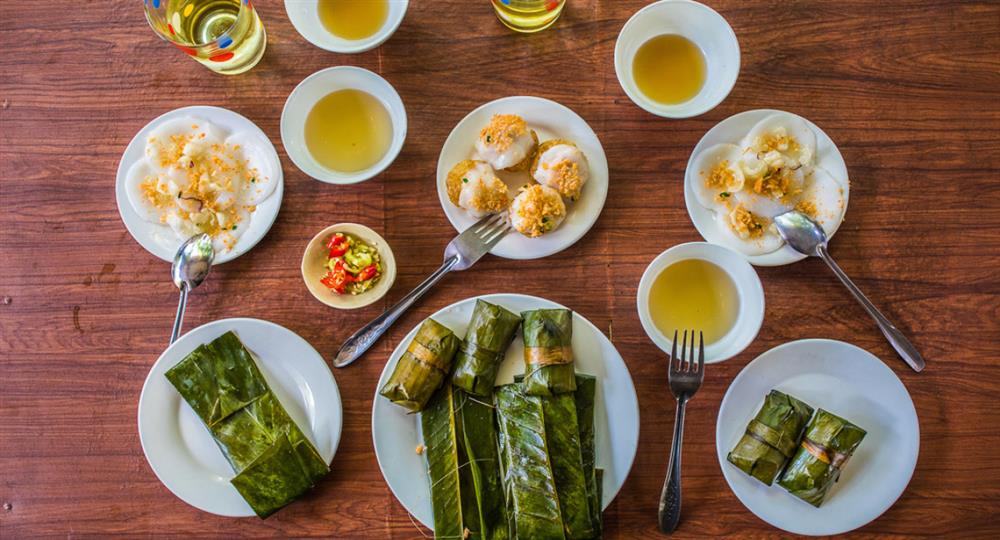Bánh tằm (bánh tầm) is a rustic noodle dish readily available at traditional markets in the Mekong Delta of Vietnam. According to locals, the name bánh tằm originates from the shape of the noodles that resemble silkworms (tằm). Bánh tằm may vary depending on local tastes. Some of these are bánh tằm with pork skin and coconut milk (bánh tằm bì), spicy bánh tằm with curry sauce (bánh tằm cay) and sweet bánh tằm (bánh tằm khoai mì).
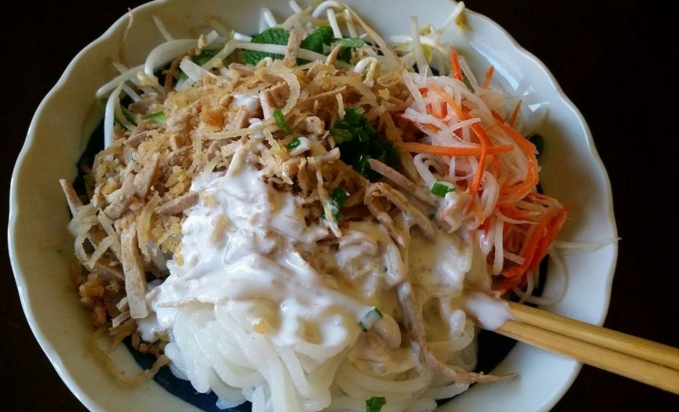
Bánh tằm with pork skin and coconut milk (bánh tằm bì)
Bánh tằm with pork skin and coconut milk (bánh tằm bì) is made from rice powder that is steamed before being kneaded. Thanks to this process, the noodles are chewy, soft but not dry and hard. While making the noodles, locals sometimes add cane sugar to bring out a refreshing taste and an appealing slightly golden-brown color to the noodles. They might also keep the noodles as is without extra ingredients to retain the original white color and fragrance of the rice.

A bowl of bánh tằm bì typically costs between VND 15,000 – 20,000, sold at traditional markets in the Mekong Delta. Photo: VnExpress
The pork skin and side dishes are no less important to bánh tằm bì than the noodles. To make pork skin crunchy and nutty, locals cut it into thin threads of equal sizes and mix it with julienned pork and powdered grilled rice. In some areas, they add soft char siu pork and crispy fried pork paste to enhance the flavor of the dish.
Bánh tằm bì is often served with blanched beansprouts, fresh cucumber and minced herbs, which are arranged at the bottom of the dish. Next, the chef adds the noodles, pork skin and char siu pork are placed on top of the vegetables before pouring a generous amount of rich coconut milk on top. In some food stalls or restaurants, the chef might also add julienned carrots and radish. To enjoy the dish, simply mix all ingredients as they are or add extra fish sauce.
Spicy bánh tằm with curry sauce (bánh tằm cay)
Ca Mau province’s spicy bánh tằm with curry sauce (bánh tằm cay)is also made from rice powder but with smaller and longer noodles. The chef grinds the powder and mixes it with water, then boils the mixture on a low heat. When the gooey mixture cools down, they sprinkle the dry powder on a tray before rolling the mixture into threads and steaming until cooked to create soft, chewy noodles.
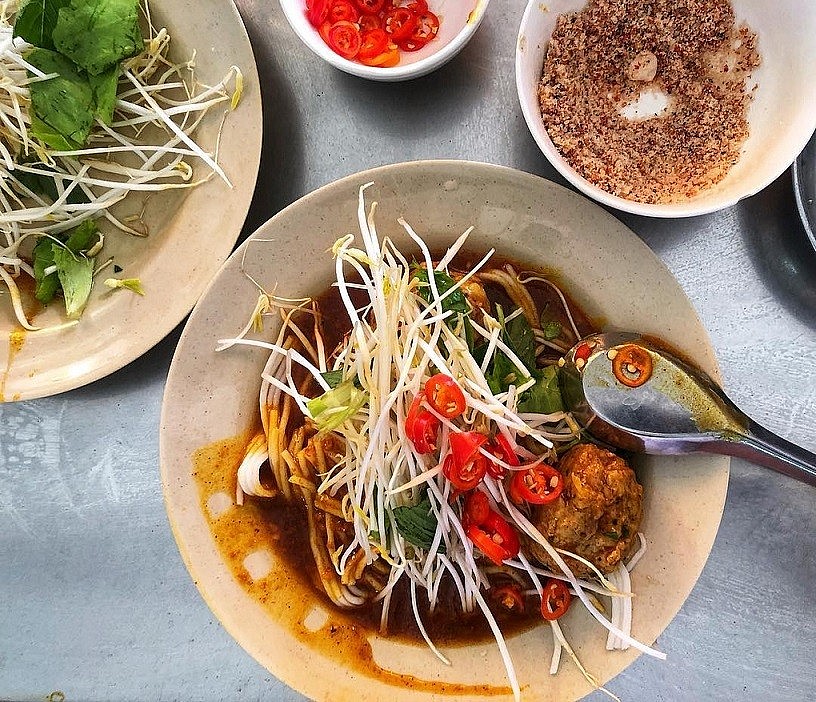
Ca Mau’s famous bánh tằm cay is served with warm sauce, chicken and shumai. Photo: @si.nguyen_/Instagram
Made from spicy curry, the sauce is the highlight of the dish and is always kept hot. Locals in Ca Mau opt to eat bánh tằm cay with soft chicken or round shumai made from well-seasoned fish paste or ground pork.
When receiving orders, the chef will shred the bánh tằm so the noodles are detached from each other, then add chicken and shumai before pouring hot curry sauce on top. The dish is served with beansprout, herbs and lettuce. Tourists may also add kumquat juice and fresh chili directly to the dish or dip the chicken and shumai in salt and kumquat juice mixture to enhance the flavor of the dish.
Sweet bánh tằm (bánh tằm khoai mì)
Sweet bánh tằm(bánh tằm khoai mì)is different from the other version of bánh tằm as it is a sweet dish made with cassava. To prepare the noodles, locals remove the skin of the cassava, then grind the flesh, dry off the extra moisture and mix it with sugar, condensed milk, tapioca powder and vanilla extract to create a thick, stringy mixture.
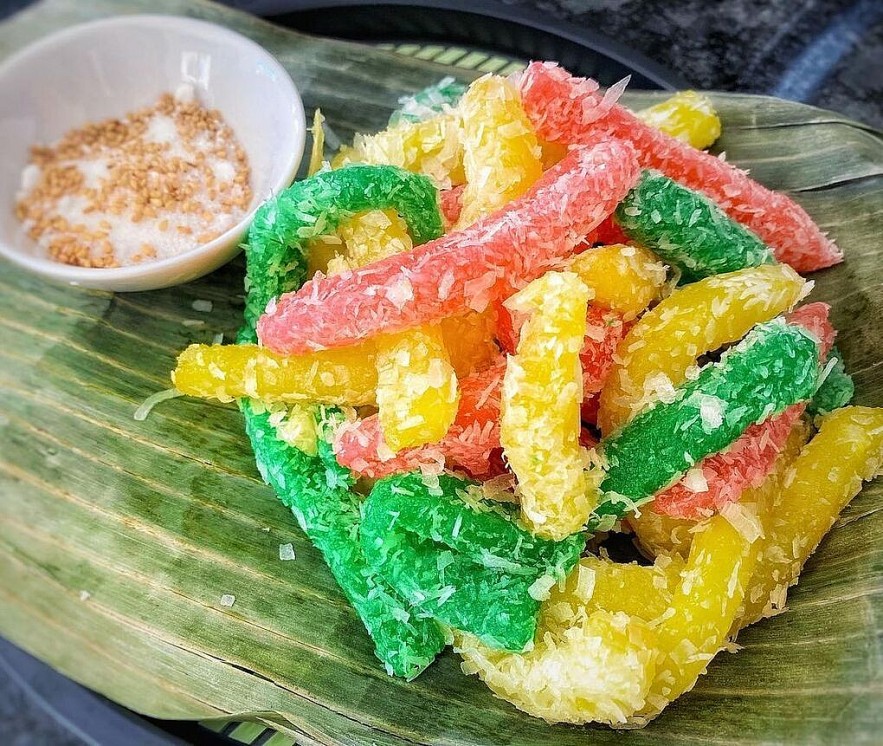
Bánh tằm khoai mì has eye-catching colors. Photo: @daethsmeli/Instagram
The dish becomes more eye-catching thanks to natural colorings such as pandan leaves (green), magenta plants (purple), cape jasmine (yellow) and gac fruit (orange-red). The chef steams the mixture in molds then uses a sharp knife to cut it into bite-size noodles before mixing it with shredded coconut. The noodles gain their chewiness from the tapioca powder and the rich, slightly sweet flavors from the coconut.
Sweet bánh tằm is often served with roasted peanut or sesame and dipped in sesame salt.
Source: Sophie Tran








